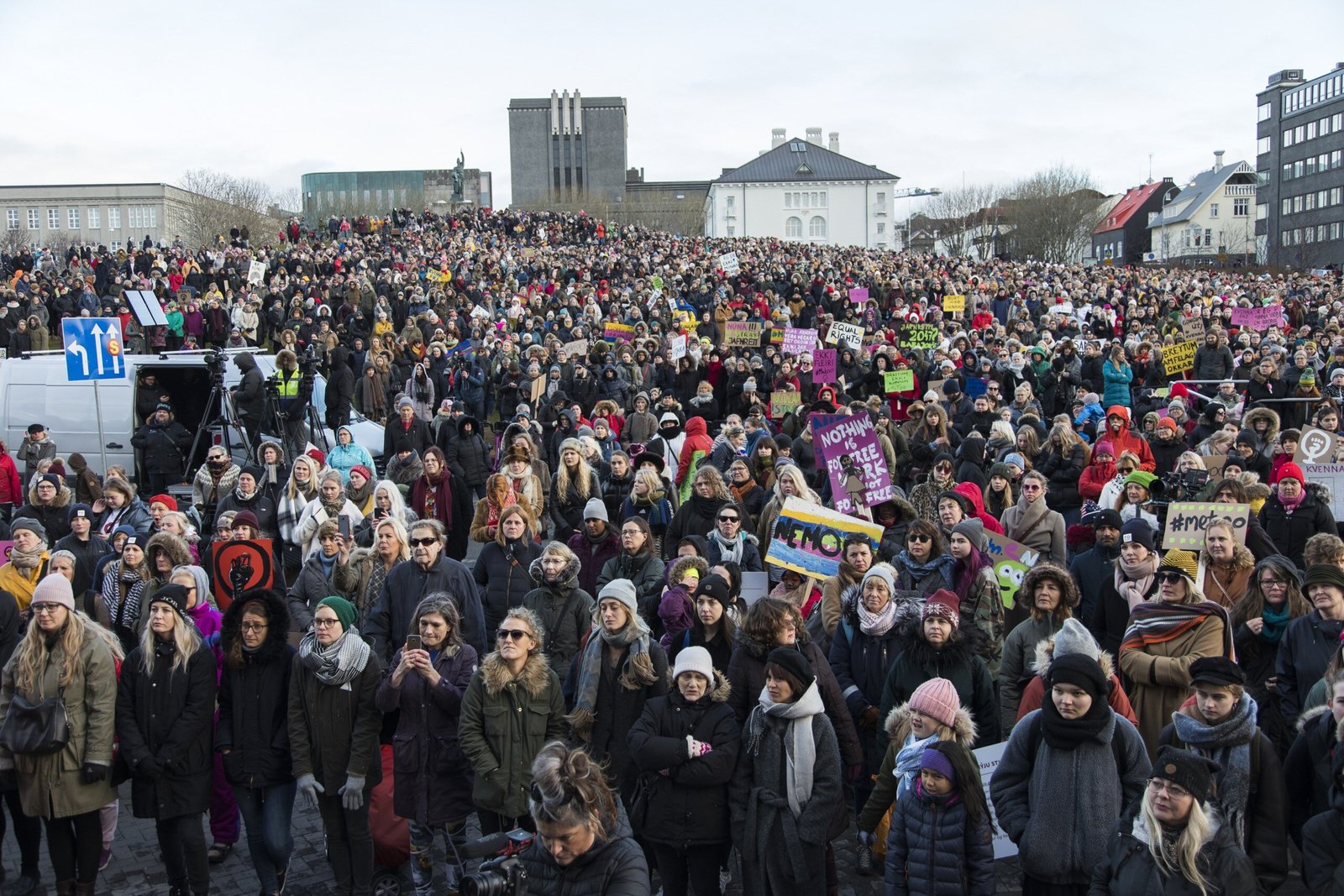Tamong them the prime minister Katrín Jakobsdóttir: aim, awareness of wage gap and to shine the spotlight on the difficult situation of immigrant women. The first major strike of Icelandic women dates back to 1975
Thousands of women, including the prime minister, Katrín Jakobsdóttiron strike against gender gap and sexual and gender-based violence: occurs in Iceland, where the protest has a specific name, “kvennafri” the “women’s day off“, and has been repeated seven times from 1975 to the present, always on October 24.
This time the strike lasted the whole day, resulting in the abstention from work duties, in every field, by all the women who joined. A protest that was not limited to the purely work environment, but included it as well household: “We also avoid unpaid work so we are expected to take responsibility – explains the collective kvennafri – such as childcare, housework and the emotional burden of being entrusted with managing the home. We demand that gender-based violence be eradicated and that the contributions of women and non-binary people to society be recognized and rewarded. We are waiting for it husbands, fathers, brothers and uncles take responsibility related to the family and the home, such as preparing breakfast and lunch, remembering relatives’ birthdays, buying a present for the mother-in-law, making dentist appointments for the children.”
As a direct consequence, on Tuesday, October 24, many schools and libraries in the country remained closed, only one bank branch remained openthe media had limited coverage and the clinics handled only emergencies, while in one Reykjavik Hill thousands of women gathered in protest. All this demonstrates how crucial women’s work is in various fields – health, education, media, economy. And yet, it is rated even less important than that of men.
“I am not working todayand I expect all women who are part of the government to do the same,” said Prime Minister Jakobsdóttir, who postponed a cabinet meeting precisely to join the strike and show solidarity with Iceland’s women. Two-thirds of the staff in the prime minister’s office represented by women, and all of them participated in the protest and abstained from work. Even the president of Iceland, Gudney Johannessonand continues to do so today.”
Also the Ministry of Foreign Affairsin a tweet, she wanted to highlight how “today we are repeating the event of the first all-day women’s strike since 1975, which marks the day when 90% of Icelandic women took a day off from both work and domestic duties obligations, leading to fundamental change, including the first woman elected president of a country in the world.”
For 14 consecutive yearsIceland has been ranked as the best country for gender equality ever since world economic forum (WEP), according to which the country has closed 91.2% of the gender gap. However, the collective organizing the strike this year wanted to concentrate difficult situation of immigrant women: “They make up about 22% of women in the Icelandic labor market and their contribution is invaluable – they underlined – but, unfortunately, their importance is rarely recognized or reflected in the wages they receive.”
The antecedents: the first major strike in 1975
As reported, the strike on 24 October 2023 is the seventh strike organized by women in Iceland. “kvennafrí” was first uploaded on October 24, 1975, the day when women across Iceland abstained from work to show the importance of their contribution to the functioning of society. Ten years later, in 198525,000 women crossed their arms again against income inequality again 2005In the 2010In the 2016 It’s in the 2018.
In all these cases, those who participated in the strike stopped working at a certain time of the day, the time when the properly paid “number of hours” had been reached. But this time the abstinence lasted for all dayas in 1975, a demonstration act aimed at raising awareness of the “systemic” wage discrimination and gender-based violence faced by women in Iceland every day.

